Accipitridae
Heather R. L. Lerner and David P. Mindell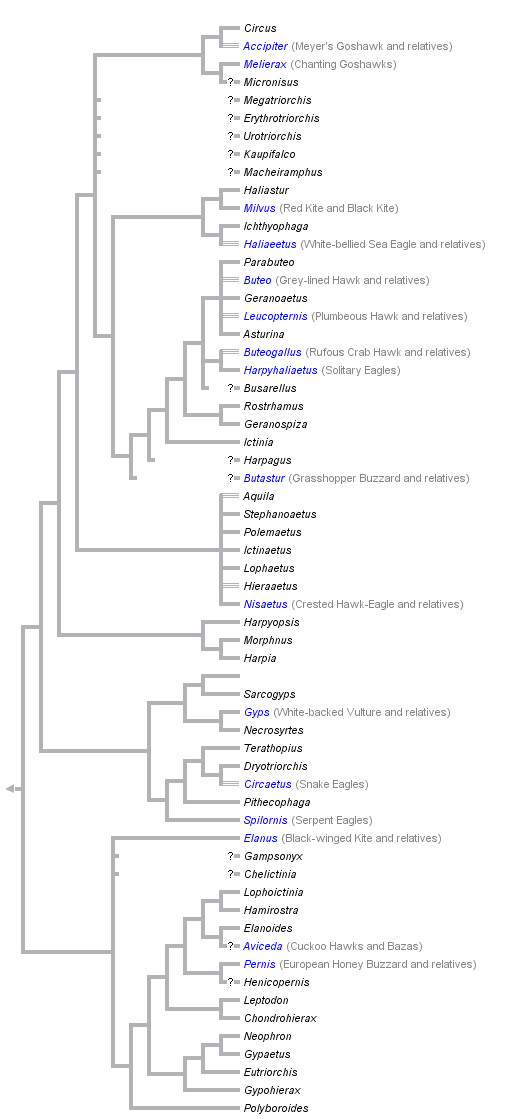


This tree diagram shows the relationships between several groups of organisms.
The root of the current tree connects the organisms featured in this tree to their containing group and the rest of the Tree of Life. The basal branching point in the tree represents the ancestor of the other groups in the tree. This ancestor diversified over time into several descendent subgroups, which are represented as internal nodes and terminal taxa to the right.

You can click on the root to travel down the Tree of Life all the way to the root of all Life, and you can click on the names of descendent subgroups to travel up the Tree of Life all the way to individual species.
For more information on ToL tree formatting, please see Interpreting the Tree or Classification. To learn more about phylogenetic trees, please visit our Phylogenetic Biology pages.
close boxReferences
Brown LH, Amadon D (1968) Eagles, hawks and falcons of the world. Country Life Books, London.
Bunce M, Szulkin M, Lerner HRL, Barnes I, Shapiro B, Cooper A, Holdaway RN (2005) The evolutionary history of New Zealand's extinct giant eagle revealed by ancient DNA. Public Library of Science Biology 3:e (9).
Burton PJK (1978) The intertarsal joint of the Harrier-hawks Polyboroides spp. and the Crane hawk Geranospiza caerulescens. The Ibis 120:171-177.
Ferguson-Lees J, Christie DA (2001) Raptors of the World. Christopher Helm, London.
Gamauf A, Haring E (2004) Molecular phylogeny and biogeography of Honey-buzzards (genera Pernis and Henicopernis). J. Zool. Syst. Evol. Research 42:145-153.
Helbig, A. J., A. Kocum, I. Seibold, M. J. Braun. 2005. A multi-gene phylogeny of aquiline eagles (Aves: Accipitriformes) reveals extensive paraphyly at the genus level. Molecular Phylogenetics and Evolution 35:147-164.
Holdaway RN (1994) An exploratory phylogenetic analysis of the genera of the Accipitridae, with notes on the biogeography of the family. In: Meyburg B-U, Chancellor RD (eds) Raptor Conservation Today. World Working Group on Birds of Prey and Owls, London, p 601-649.
Jollie M (1976) A contribution to the morphology and phylogeny of the Falconiformes, part 1. Evolutionary Theory 1:285-298.
Jollie M (1977a) A contribution to the morphology and phylogeny of the Falconiformes, Part 2. Evolutionary Theory 2:285-298.
Jollie M (1977b) A contribution to the morphology and phylogeny of the Falconiformes, part 3. Evolutionary Theory 2:209-300.
Kruckenhauser, L., Haring, E., Pinsker, W., Riesing, M. J., Winkler, H., Wink, M., Gamauf, A (2004) Genetic versus morphological differentiation of old world buzzards (genus Buteo; Accipitridae). Zoologica Scripta 33:197-211.
Lerner, H. R. and D. P. Mindell (2005) Phylogeny of eagles, Old World vultures, and other Accipitridae based on nuclear and mitochondrial DNA. Molecular Phylogenetics and Evolution 37:327-346.
Mindell DP, Sorenson MD, Huddleston CJ, Miranda HCJ, Knight A, Sawchuck SJ, Yuri T (1997) Phylogenetic relationships among and within select avian orders based on mitochondrial DNA. In: Mindell DP (ed) Avian Molecular Evolution and Systematics. Academic Press, London, p 211-245.
Riesing MJ, Kruckenhauser L, Gamauf A, Haring E (2003) Molecular phylogeny of the genus Buteo (Aves : Accipitridae) based on mitochondrial marker sequences. Molecular Phylogenetics and Evolution 27:328-342.
Seibold I, Helbig AJ (1995) Evolutionary history of New and Old World vultures inferred from nucleotide sequences of the mitochondrial cytochrome b gene. Philosophical Transactions of the Royal Society of London Series B-Biological Sciences 350:163-178.
Seibold I, Helbig AJ (1996) Phylogenetic relationships of the sea eagles (genus
Haliaeetus): Reconstructions based on morphology, allozymes and mitochondrial DNA sequences. Journal of Zoological Systematics and Evolutionary Research 34:103-112.
Seibold I, Helbig AJ, Meyburg BU, Negro JJ, Wink M (1996) Genetic Differentiation and Molecular Phylogeny of European Aquila Eagles according to Cytochrome b Nucleotide Sequences. In: Meyburg BU, Chancellor RD (eds) Eagle Studies. World Working Group on Birds of Prey (WWGBP), London.
Stresemann E, Amadon D (1979) Order Falconiformes. In: Peters JL (ed) Check-list of the birds of the world. Harvard University Press, Cambridge, Massachusetts, p. 271-425.
Thiollay JM (1994) Family Accipitridae (Hawks and Eagles). In: del Hoyo J, Elliott A, Sargatal J (eds) Handbook of the Birds of the World. Lynx Ediciones, Barcelona, p 52-205.
Wink M, Sauer-Gürth H (2004) Phylogenetic relationships in diurnal raptors based on nucleotide sequences of mitochondrial and nuclear marker genes. In: Raptors Worldwide; (R.D. Chancelor & B.-U. Meyburg, eds.), WWGBP, Berlin.
Title Illustrations

| Scientific Name | Haliaeetus leucocephalus |
|---|---|
| Location | Kodiak Island, Alaska, USA |
| Comments | Bald eagle |
| Creator | Dave Menke |
| Specimen Condition | Live Specimen |
| Behavior | draws wings back as it comes into the nest for a landing |
| Source Collection | U.S. Fish and Wildlife Service Online Digital Media Library |
| Scientific Name | Torgos tracheliotus |
|---|---|
| Location | Masai Mara, Kenya |
| Comments | Lappetfaced (Nubian) vultures |
| Specimen Condition | Live Specimen |
| Behavior | one leaping at the other (talons first) near a carcass |
| Copyright |
© Greg and Marybeth Dimijian

|
| Scientific Name | Terathopius ecaudatus |
|---|---|
| Location | captive animal at Davey home in Athi River, Kenya |
| Comments | Bateleur Eagle |
| Specimen Condition | Live Specimen |
| Body Part | head and upper body |
| Copyright |
© Greg and Marybeth Dimijian

|
About This Page
Heather R. L. Lerner

Joseph Moore Museum and Earlham College, Richmond IN
David P. Mindell

California Academy of Sciences, San Francisco, California, USA
Correspondence regarding this page should be directed to Heather R. L. Lerner at and David P. Mindell at
Page copyright © 2005 Heather R. L. Lerner and David P. Mindell
 Page: Tree of Life
Accipitridae.
Authored by
Heather R. L. Lerner and David P. Mindell.
The TEXT of this page is licensed under the
Creative Commons Attribution-NonCommercial License - Version 3.0. Note that images and other media
featured on this page are each governed by their own license, and they may or may not be available
for reuse. Click on an image or a media link to access the media data window, which provides the
relevant licensing information. For the general terms and conditions of ToL material reuse and
redistribution, please see the Tree of Life Copyright
Policies.
Page: Tree of Life
Accipitridae.
Authored by
Heather R. L. Lerner and David P. Mindell.
The TEXT of this page is licensed under the
Creative Commons Attribution-NonCommercial License - Version 3.0. Note that images and other media
featured on this page are each governed by their own license, and they may or may not be available
for reuse. Click on an image or a media link to access the media data window, which provides the
relevant licensing information. For the general terms and conditions of ToL material reuse and
redistribution, please see the Tree of Life Copyright
Policies.
- First online 14 December 2005
- Content changed 09 May 2006
Citing this page:
Lerner, Heather R. L. and David P. Mindell. 2006. Accipitridae. Version 09 May 2006 (temporary). http://tolweb.org/Accipitridae/26375/2006.05.09 in The Tree of Life Web Project, http://tolweb.org/




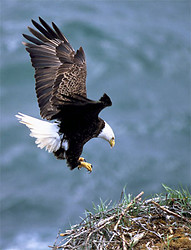
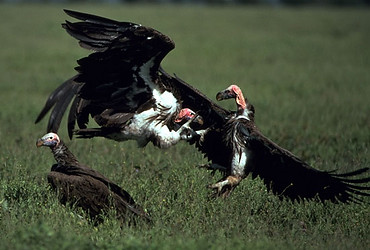
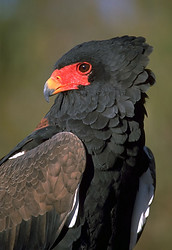

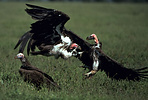


 Go to quick links
Go to quick search
Go to navigation for this section of the ToL site
Go to detailed links for the ToL site
Go to quick links
Go to quick search
Go to navigation for this section of the ToL site
Go to detailed links for the ToL site